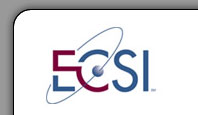|
News
Rebecca Harding from Graceland University has provided the following information about the Statute of Limitations concerning student loans, including Bankruptcy from Title 20 Education statutes.
Patricia Peoples from the University of Miami provided additional information concerning the Title 11 bankruptcy statutes.
This document, previously "Perkins Bankruptcy Statute of Limitations ", has been updated to reflect the overall topic of student loan statutes of limitations, including bankruptcy. Bankruptcy was previously documented in
Regulation Notice 12: Amendment to Bankruptcy Law and Regulation Notice 2: H.R. 6 makes loans nondischargable (originally provided by Linda Dotson from San Diego State University).
In short, there is no statute of limitations on student loans. The following text is reproduced from US Code, Title 20, Section 1091a from Cornell Law School Legal Information Institute site (see http://www4.law.cornell.edu/uscode/20/1091a.text.html).
US Code as of: 01/05/99
Sec. 1091a. Statute of limitations, and State court judgments
- (a)
In general
- (1)
It is the purpose of this subsection to ensure that
obligations to repay loans and grant overpayments are enforced
without regard to any Federal or State statutory, regulatory, or
administrative limitation on the period within which debts may be
enforced.
- (2)
Notwithstanding any other provision of statute, regulation,
or administrative limitation, no limitation shall terminate the
period within which suit may be filed, a judgment may be enforced,
or an offset, garnishment, or other action initiated or taken by -
- (A)
an institution that receives funds under this subchapter
and part C of subchapter I of chapter 34 of title 42 that is
seeking to collect a refund due from a student on a grant made,
or work assistance awarded, under this subchapter and part C of
subchapter I of chapter 34 of title 42;
- (B)
a guaranty agency that has an agreement with the Secretary
under section 1078(c) of this title that is seeking the repayment
of the amount due from a borrower on a loan made under part B of
this subchapter after such guaranty agency reimburses the
previous holder of the loan for its loss on account of the
default of the borrower;
- (C)
an institution that has an agreement with the Secretary
pursuant to section 1087c or 1087cc(a) of this title that is
seeking the repayment of the amount due from a borrower on a loan
made under part C or D of this subchapter after the default of
the borrower on such loan; or
- (D)
the Secretary, the Attorney General, or the administrative
head of another Federal agency, as the case may be, for payment
of a refund due from a student on a grant made under this
subchapter and part C of subchapter I of chapter 34 of title 42,
or for the repayment of the amount due from a borrower on a loan
made under this subchapter and part C of subchapter I of chapter
34 of title 42 that has been assigned to the Secretary under this
subchapter and part C of subchapter I of chapter 34 of title 42.
- (b)
Assessment of costs and other charges
Notwithstanding any provision of State law to the contrary -
- (1)
a borrower who has defaulted on a loan made under this
subchapter and part C of subchapter I of chapter 34 of title 42
shall be required to pay, in addition to other charges specified
in this subchapter and part C of subchapter I of chapter 34 of
title 42 reasonable collection costs; and
(2) in collecting any obligation arising from a loan made under
part B of this subchapter, a guaranty agency or the Secretary
shall not be subject to a defense raised by any borrower based on
a claim of infancy.
- (c)
State court judgments
A judgment of a State court for the recovery of money provided as
grant, loan, or work assistance under this subchapter and part C of
subchapter I of chapter 34 of title 42 that has been assigned or
transferred to the Secretary under this subchapter and part C of
subchapter I of chapter 34 of title 42 may be registered in any
district court of the United States by filing a certified copy of
the judgment and a copy of the assignment or transfer. A judgment
so registered shall have the same force and effect, and may be
enforced in the same manner, as a judgment of the district court of
the district in which the judgment is registered.
The Title 11 provision was amended by the Higher Education Amendments of 1998 [Title 20 U.S.C. 971(a) (b)]. In essence, the amendment eliminated
from the Bankruptcy Code, at 523(a) (8) *a), the more or less automatic discharge of a student loan after a seven year waiting period, excluding periods of deferment, after a loan first
became due. After the effective date of the Title 20 amendment to 523(a)(8), October 1, 1998, any action filed in Bankruptcy which seeks the discharge of federal and certain private student loans must
establish that the repayment of same would cause an "undue hardship" on the borrower, without regard to any "statute of limitations".
The following text is reproduced from US Code, Title 11, Section 523(a)(8) Cornell Law School Legal Information Institute site (see http://www4.law.cornell.edu/uscode/11/523.html).
US Code as of: 01/05/99
Sec. 523. Exceptions to discharge
- (a)
A discharge under section 727, 1141, 1228(a), 1228(b), or
1328(b) of this title does not discharge an individual debtor from
any debt -
- (8)
for an educational benefit overpayment or loan made,
insured or guaranteed by a governmental unit, or made under any
program funded in whole or in part by a governmental unit or
nonprofit institution, or for an obligation to repay funds
received as an educational benefit, scholarship or stipend,
unless excepting such debt from discharge under this paragraph
will impose an undue hardship on the debtor and the debtor's
dependents;
|


![]()